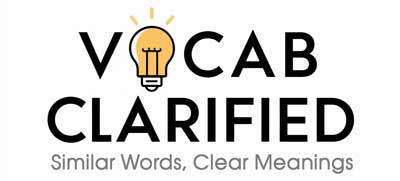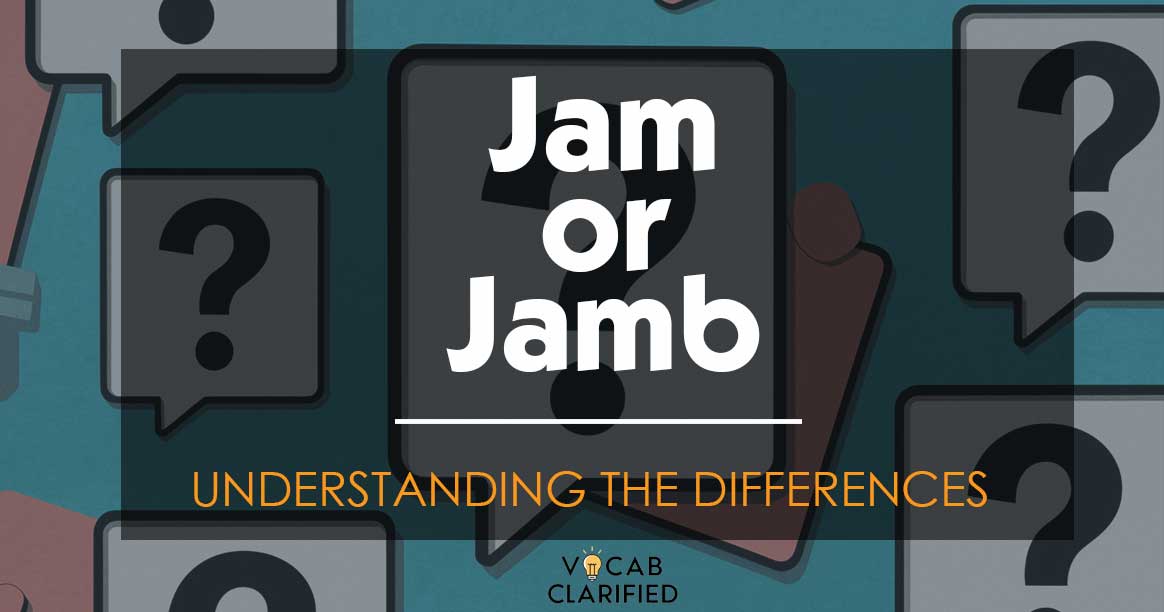Ever found yourself in a linguistic jam, unsure whether to use “jam” or “jamb”? English homophones can be tricky, and these two words are prime examples. Whether you’re talking about a delicious fruit spread or the side of a door frame, choosing the correct term is essential.
Let’s delve into the distinctions between “jam” and “jamb” to clear up any confusion.
Understanding Jam And Jamb
Jam: Definition and Usage
“Jam” is a versatile word commonly used in various contexts. Primarily, it refers to a sweet spread made by boiling fruit with sugar until it thickens.
Additionally, “jam” can describe a situation where something is stuck or congested.
For example:
- Culinary Context: “She enjoys toast with strawberry jam every morning.”
- Situational Context: “We were late due to a traffic jam on the highway.”
Jamb: Definition and Usage
Contrastingly, “jamb” is a term used in architecture and carpentry, referring to the vertical sides of a door or window frame. It is a specific term with a singular meaning.
For instance:
- Architectural Context: “The carpenter measured the door jamb before installing the new door.”
- Maintenance Context: “He painted the window jambs to match the new shutters.”
Side-by-Side Comparison
To further clarify the differences and help you decide which to use, here’s a side-by-side comparison:
| Aspect | Jam | Jamb |
| Definition | A sweet fruit spread or a situation of blockage | The vertical side of a door or window frame |
| Common Usage | “She spread jam on her toast.” | “The door jamb needs repairing.” |
| Key Differences | Refers to food or congestion | Refers to a structural component |
When deciding between “jam” and “jamb,” consider the context of your conversation or writing. If discussing food, traffic, or something being stuck, “jam” is the appropriate term.
However, if referring to parts of a building structure, “jamb” is the correct choice. Remember, the best choice often depends on the specific subject matter.
Everyday Usage Examples
To see how “jam” and “jamb” fit into everyday language, here are some practical examples:
- Jam:
- Culinary Use: “He made homemade blueberry jam from the berries he picked.”
- Traffic Situation: “Avoid downtown during rush hour to miss the traffic jam.”
- Mechanical Issue: “The copier isn’t working because there’s a paper jam.”
- Music Slang: “That new song is my favorite jam!”
- Jamb:
- Home Improvement: “She noticed the door jamb was warped and needed replacement.”
- Construction: “The window jambs must be level for proper installation.”
- Decoration: “They hung holiday decorations on the jamb of the front door.”
Conclusion
Understanding the difference between “jam” and “jamb” is straightforward once you remember their distinct meanings. “Jam” can refer to a sweet spread, a blockage, or even be used colloquially in music, while “jamb” is strictly the side of a door or window frame.
Keeping these definitions in mind will help you use the correct term confidently in any context.

